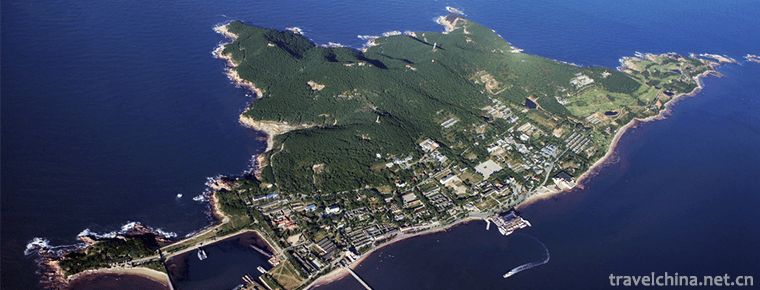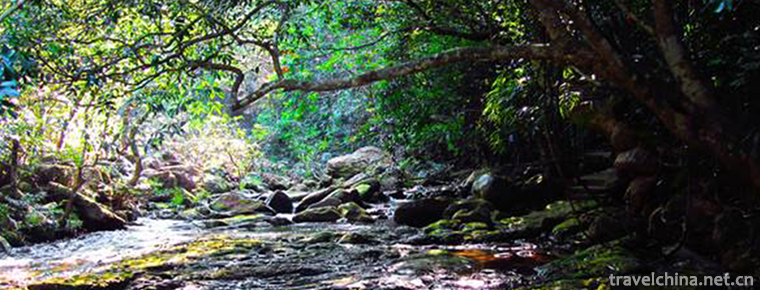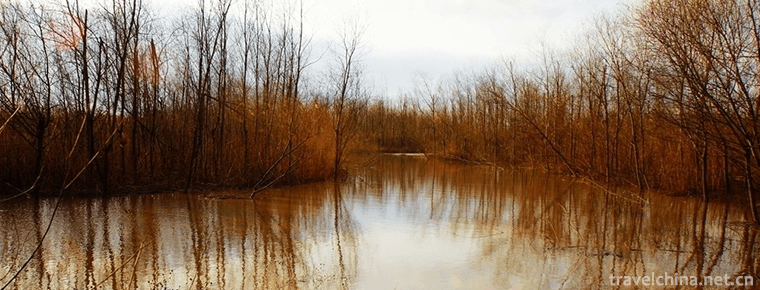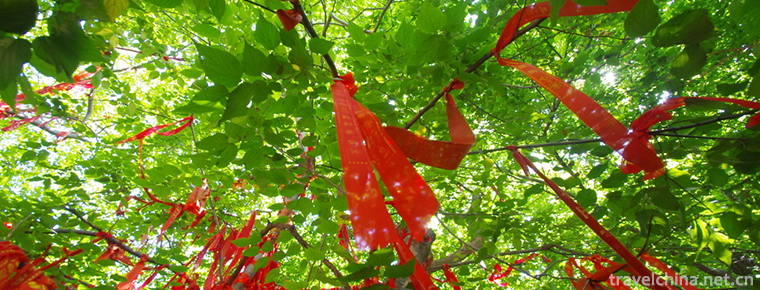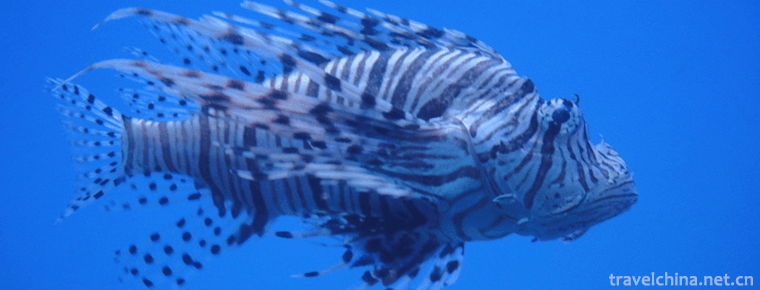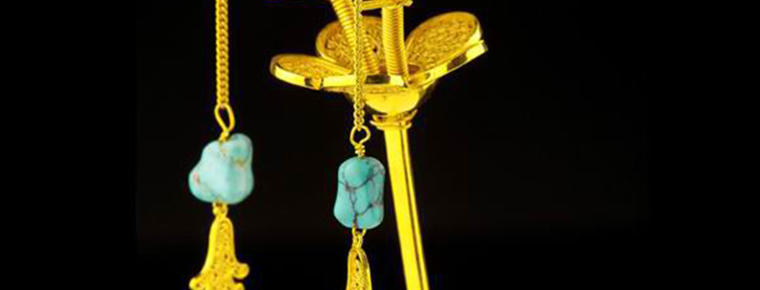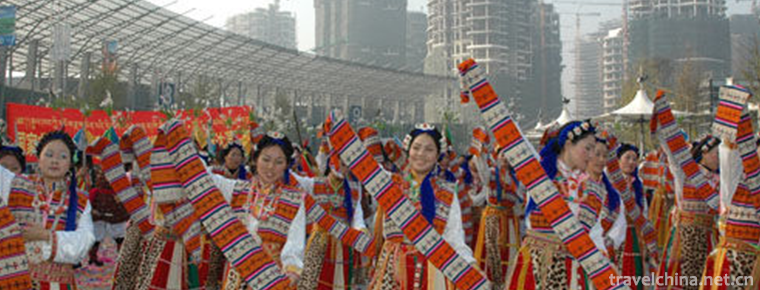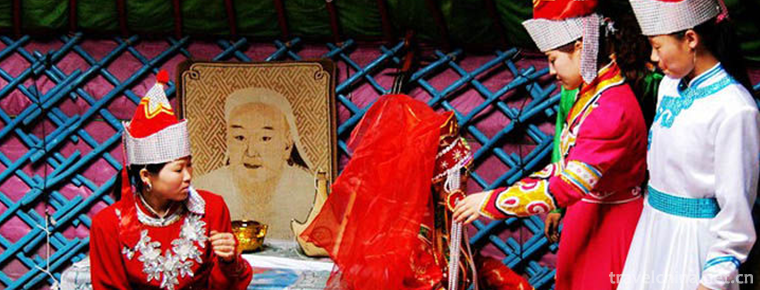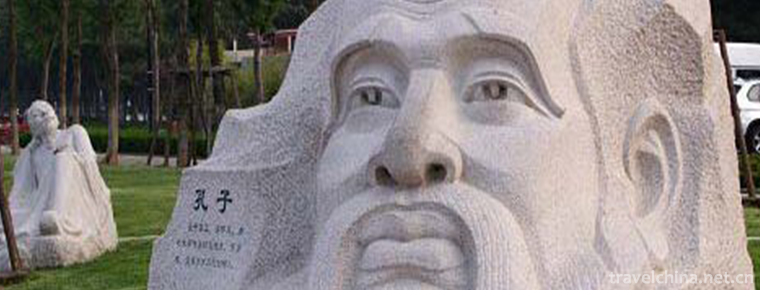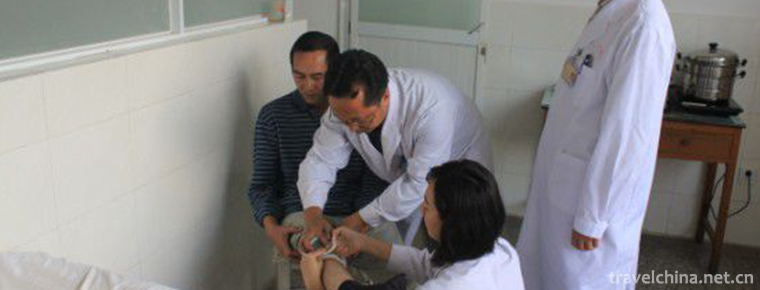Hongfeng Lake Scenic Area
Hongfeng Lake Scenic Area
Hongfeng Lake Scenic Spot is located in the western suburb of Guiyang City, Guizhou Province, China. It is 28 kilometers away from Guiyang, the capital of Guizhou Province. It is the first gold tour stop on the western route of Guizhou Province. The scenic spot covers an area of 200 square kilometers. It is a national scenic spot which integrates the lake and mountain scenery, karst landform and ethnic minority customs of the plateau.
There is a red Maple Ridge near the lake. There are many maple trees on the ridge and around the lake. In late autumn, maple leaves are red as fire, red leaves are blue, and the scenery is beautiful, so it is called "Red Maple Lake".
Hongfeng Lake Scenic Area consists of North Lake, South Lake, Zhonghu Lake and Houhu Lake. North Lake is famous for its island. Bird Island, Snake Island, Turtle Island and many other islands, such as scattered pearls, are generally embellished on the blue waves of 10,000 hectares, forming a unique landscape; along the North Lake, there are ancient tombs of the Western Han Dynasty, and the Ming Dynasty "Miao Wang camp".
In May 2017, Red Maple Lake Scenic Area was delisted as 4A-level Scenic Area.
Development history
The large-scale development of Hongfeng Lake area has a history of more than 600 years. As early as the 23rd year of Hongwu in Ming Dynasty (1390), more than 10,000 Ming Army members who fought for the Hui division in Yunnan Province were stationed in the middle reaches of MaoTiaohe River under the leadership of General Jiaoqin of Mingwei, establishing Weiqingwei and carrying out military garrison. In today's Hongfeng Lake Town, the first, the eighth, the second, the seventh, the fifth, the sixth, the Liu Guanpu, the Chen Liangpu, the Longjing Fort and other places are the former garrisons of the Tun Army. Tunjun's "three-point Garrison and seven-point garrison" opened the prelude to the agricultural development of this hot soil. Afterwards, through the hard work of successive generations of peasants, the desert virgin land was built into the "granary" of Qingzhen.
In 1958, 18,000 inhabitants of nearly 100 villages in Hongfeng Lake flooded area devoted more than 70,000 mu of good farmland, fertile woodland, over 10,000 houses, relocated or relocated to high places, worked hard to rejuvenate their families and start new businesses. What a heroic and admirable measure they have taken. For decades, under the support of the state and the leadership of local Party committees and governments, they lived in harmony with the residents who had not moved, united and helped each other, developed production and built their homes. After a period of poverty, they lived and worked in peace and contentment with Hongfeng Lake and led a well-off life.
In December 1991, Qingzhen implemented the construction of towns and the withdrawal of townships, and jointly built Dongmen Bridge Buyi Township, Zhongba Miao Township, Luanxiao Township, Daxing Township and Chengguan Township under the jurisdiction of Chengguan District into Hongfeng Lake Town. In June 2003, the city proper with better social and economic conditions, Dongmen Bridge and Daxing District were divided into new Qinglong Street Office. The scale of Hongfeng Lake Town has been reduced and its comprehensive strength has been weakened, but its economy is still growing steadily, healthily and steadily. In 2006, the GDP reached 490 million yuan, of which the proportion of the first, second and third production was 14:57:29. The total fiscal revenue has reached 5.3277 million yuan, the local fiscal revenue has reached 3.062 million yuan, and the per capita net income of farmers has increased by 140 yuan to 3.145 yuan.
Founded in 1981, Hongfeng Lake Scenic Spot was approved by Guizhou Provincial People's Government as a provincial-level scenic spot in 1987 and approved by the State Council as the second batch of key national scenic spots in 1988.
geographical environment
position
Hongfeng Lake is located in the outskirts of Qingzhen City, 33 kilometers away from Guiyang, less than an hour by bus. His Lake area can reach 2 kilometers east-west and 25 kilometers north-south. The Lake area is surrounded by red maple trees. In the golden autumn season, the maple leaves are like fire, the lake water is gentle and mutually shining, so the name "Red Maple Lake" is quite poetic and picturesque.
natural resources
Hongfeng Lake Scenic Area, one of the national scenic spots in Guizhou Province, is a place that even Guizhou local people love to visit. It attracts local tourists not only because of its large lake area, but also because of its small islands on the lake. Its total water area is 57.2 square kilometers, with a water storage capacity of 600 million cubic meters, which is the largest artificial lake in Guizhou plateau. According to the data verified by experts, Hongfeng Lake is 12 times larger than the Shisanling Reservoir in Beijing, equivalent to six West Lake in Hangzhou.
Hongfeng Lake is composed of middle, south, north and rear lakes. Among them, Beihu Lake is famous for its islands, such as Bird Island, Snake Island, Turtle Island and so on. There are ancient tombs in the Western Han Dynasty and Miao Wang camp in the Ming Dynasty along the coast, and so on. So far, we can still feel the feeling of the fireworks and smoke city. Nanhu Lake is famous for its caves. Among all kinds of lakes, Hongfeng Lake has its own style, and all kinds of strange stalactites in the caves are amazing. There are many branches in the back lake, the boats and pedestrians are moving, and the sunset is just like a misty rain in the south of the Yangtze River and another small bridge family.
Main attractions
South Lake
Nanhu Lake has the largest area and most scenic spots. Nanhu Lake is famous for its many caves. First of all, there is a group of fantastic rock cliffs, which are small and exquisite and naturally formed "bonsai mountain". The stones here are particularly colorful, with lime and brown shale plunging directly into the blue water.
South Lake is famous for its caves. General's Cave, Fishing Cave, Underwater Cave and Dakou Cave are equally bizarre. Especially in the General Cave, when the water rises, a unique "Dongzhong Lake" is formed. The stalactite pillars in the cave are colorful and dazzling. At the end, there is a crystal-clear and sparkling stone mantle more than 10 meters high and 20 meters wide, just like a huge waterfall falling down from a cliff, which is very spectacular. There is a lake in the cave, the water quality is clear, and the boat journey is 1400 meters. Here, you can enjoy the various stalactites while listening to the mysterious old legends. There is a connection between North Lake and South Lake. Zhonghu Lake is narrow, with steep cliffs on both sides, steep mountains and beautiful scenery. Pines and cypresses on the mountain are vigorous and upright. On the top of the mountain, a stone is like a pavilion, a fairy aunt, and a stone is like an arhat with a smile. The Houhuwan Bay is crisscrossed by many branches. Seemingly exhausted mountains and rivers, suddenly willows, dark flowers, boat bows, picturesque landscapes, a panoramic view: nearby villages, returning fishing boats, hand-in-hand couples, dancing Miao girls.
The surface of the lake is gradually narrow, and the rocky banks on both sides are like axes and swords, which some visitors call "Little Three Gorges". This landscape is full of stone peaks, like swords inserted into it, which add a bit of masculinity to the beautiful lake water, and people call it "Little Stone Forest". The rocks here have a different style, they can not see ridges, but can not see peaks from side to side, and pile up one after another. If there are numerous classics, people call it "Cliff Sky Book".
Fishing hole
Across the lake from the General Cave is the Fishing Cave, which is a cascade karst cave. The cave is divided into seven layers, one layer and one scene. The bottom of the cave is Yinhe River. The karst inside the cave is very spectacular. The stalactites of various shapes are dazzling. Some are brilliant in gold and some are white as jade, just like an underground palace with emerald jewels.
There is a Miao village on the hillside where the fishing hole is located. More than ten families in the village are all Miao. Miao women here wear a Tibetan-blue pair-skirt and pleated skirt, adorned with flower patterns at the collar, sleeves, back and skirt edge, which is very elegant; the head of Zhoumen is wearing black and white beads and pen-point hairdress, together with silver earrings and silver collars, which have strong national characteristics.
Ancient Battlefield Sites
Huwan has a large number of Han dynasty, criss-crossing, along the coast not only can see the pastoral customs, but also can see a number of ancient battlefield sites, just listen to the names of these sites, you can know that this area is the ancient soldier's contest: Ludi Sentinel, Xiaoguanbao, Yingpan, Shicheng. During the Ming and Qing Dynasties, there were wars between the Ming Dynasty and the coalition forces of Shuixi nationalities. In the early Qing Dynasty, the Wu Sangui separatist forces fought against the Qing army and the local powerful forces, and the local people fought against the Qing Dynasty. Among them, Ludishao Ancient City Site is the most representative. The ancient city of Ludi Sentinel was built in 1872 in Tongzhi, Qing Dynasty. It was originally built with Crystal Pavilion and Puxing Temple. The reclusive "Ludi Biye" in Wuzhong, a poet of Guizhou in Ming Dynasty, was in the city.
This Ludi City is the base of the people's revolt against the Qing Dynasty. The Qing Dynasty dispatched Zhao Deguang, the governor of the so-called "iron footboard", to lead the army to attack. It was a fierce life-and-death struggle. The insurgents suffered heavy casualties, but they would rather die than surrender and fight bravely. Finally, Zhao Deguang, a Qing army general with heavy blood debts, was shot under Ludi City. Although Ludicheng was razed to the ground in the subsequent war, the bloody and bloody slaughter and the earth-shaking resistance remained in the hearts of future generations. You may as well use your imagination to imagine creating a scene of ethnic uprisings in Ludicheng more than 130 years ago, battling bloody battles between the peaks and valleys of the lake and the Qing army.
Dong Village
The Dong village was built early. On April 9, 1991, it officially received tourists from home and abroad. It consists of Dong Yuan, Dong Ju, Drum Tower, Flower Bridge, Square, Courtyard, Huawei, Lawn and Wharf. The total building area is more than 3,000 square meters. The broad corridor, hanging-feet building, small green tile roof plus bias building in Dong residence have the characteristics of Dong residence.
Gulou and Huaqiao are the representatives of Dong architectural culture. All Dong villages must build drum towers and flower bridges. In 1994, the model of Gulou Huaqiao in Guizhou was exhibited in Beijing National Culture Palace. Some leaders of the Party and the state visited it and gave a high appraisal of Dong architecture and Dong songs.
Huaqiao is a bridge that crosses streams and rivers, shelters from rain and keeps cool, decorates scenery, and integrates various uses. Its origin also spreads many beautiful myths and legends.
Drum Tower is the landmark building of Dong village. Every Dong village must have Drum Tower. According to the introduction of the old Dong people, Drum Tower is known as the "shade tree" of the Dong village. If there is no "shade tree" in the village, the village will not have cohesion and prosperity.
Drum Tower is very unique in shape, its bottom is mostly square, the roof is polygonal shape, the number of floors are singular, such as 9, 11, 13, 15, 17, the roof hangs a symbol of auspicious treasure gourd. More than a dozen stories of drum towers are made of Chinese fir through loquats or tenons, without a nail. The ideal arch under the eaves and the warping angle of the eaves are very delicate. The eaves are painted with various ancient costume figure paintings, landscape paintings, flower and bird paintings or life custom paintings, which are lifelike and lifelike. The whole drum tower is magnificent and magnificent from a distance. It is cordial and beautiful from a close look, exquisite and elegant.
In the past, the function of Drum Tower was Changgu on the roof of the building, so as to alarm and discuss drum beating. Today, Drum Tower has been endowed with new functions by the times. It has become a place for Dong people to learn culture and carry out entertainment activities. When night falls, the Drum Tower lights brilliant, night school students here devote themselves to learning culture. Every festival, villagers gather in drums and floors to celebrate and dance, men and women singing, lively and extraordinary. The world-famous "Dong Song" is often sung here. The vast majority of young men and women, but also the drum tower as a dissemination of love seeds paradise, here "singing and sitting on the moon", singing and dancing, each other to talk about love. Drum Tower is the heart of Dong Village and the crystallization of the wisdom and wisdom of the Dong people.
Wind and rain
In Dong Township, it can be compared with Drum Tower. It is the wind and rain of Dong Village, commonly known as flower club.
In areas where Dong people live together, there must be rivers and bridges, all of which are built on the main roads of traffic in front of villages and behind villages. Most of them are wooden grains, stone arch slabs, bamboo rafts, etc. They are four or five meters wide. Blue stone piers, Chinese fir paving surface, above the tile-roofed corridor. The corridor is lined with balustrades and benches, which are like verandas, and can be used for pedestrians to escape the wind and rain, enjoy and rest.
Wind and rain is very rich in national characteristics, but also one of the unique buildings of Dong village. Because there are corridors and pavilions built on the pavilion, which can be used for pedestrians and shelter from wind and rain, it is called wind and rain. Cheng Yangli, situated on the Linxi River of the Three Rivers in Guangxi, is the representative of wind and rain. Founded in 1916, it is a wooden beam with four holes and five piers, 76 meters in length, 3.4 meters in width and 10.6 meters in height. On five bluestone piers, six rows of Chinese fir trees, four or five feet in circumference, are erected as beams, on which five different roof pavilions alternate, forming a corridor-style pavement, with benches on both sides for pedestrians to shelter from rain and rest, and the pavilions and corridors are painted with exquisite Dong designs. There are pagoda-shaped pavilions and palace-shaped pavilions on the five stone piers, which are staggered and vigorous.
Now the Miao Village embodies the characteristics of the Miao people in southeastern Guizhou. The Miao Village is built in accordance with the mountain, with the layout of the situation, using the dry fence type, using the terrain to build the whole building and half-building half-side building. The Miao Wang Tai is restored with the Xiaoping farm in the village as the center, and the entrance of the Miao Village has the gate. The Miao people are very hospitable. As long as they know that the guests are coming, they have to wait on the road in the village. The girls are dressed in the best clothes, with silver ornaments on their heads and breasts. Miao youths hold different lengths of Luzhi and accompaniment musical instruments, awn barrel, guests appear, awn barrel sounds to the sky, Lusheng music is played, girls hold sweet rice wine, singing toast song, toast to the guests.
Miao people are a people who can sing and dance well. All kinds of songs and dances are dazzling. Miao's songs mainly include "Fei Song", "Jiu Song", "You Fang Song" and "Gu Zang Song". The songs are loud, loud and enthusiastic. The dances of Miao nationality are mainly "Lusheng Dance", "Wood Drum Dance" and "Bench Dance". The dancing posture is natural and free, and the joy is rough. The Miao people's Lusheng skill dance "rolling hill beads" concentrates on the various movements of Teng, Jump, Flash, Turn, Turn and Roll in the dance. What's more wonderful is that the head and shoulders are on the ground, the feet are facing the sky, and the Sheng is blowing constantly. It won the gold medal at the National Games. The Miao people's "wooden drum" rhythm is very strong, rough and unrestrained. When performing abroad, animals produce strong effects and are known as "Oriental disco". Miao people also have the magic skills and special skills of "going up Daoshan" and "going down to the sea of fire". Shangdaoshan is the ladder of the knife. The performers barefoot, climbing and stepping on the blade of the knife constantly make various postures. Even the whole body rotates 360 degrees on the tip of the knife. The viewers sweat with their hands, while the performers look at ease.
When he stepped on the iron plate, Miao Wang walked barefoot through the iron plate burning red to about 800 degrees, then slowed down on the iron plate. I could hear the "squeak" sound of the meat feet stepping on the iron plate clearly in the vicinity, and there were bursts of hot air coming, but Miao Wang ignored it. After the performance, the Miao King put the iron plate into a jar of cold water. The cold water boiled immediately and the smoke came out. It was amazing! Finally, there was a bonfire party. Hundreds of people we knew or didn't know joined hands in a circle, jumping, screaming and running around the middle firewood pile. The thorough relaxation and primitive wildness in the heart are fully exposed...
Hongfeng four lakes
Hongfeng Lake Scenic Area consists of North Lake, South Lake, Zhonghu Lake and Houhu Lake. North Lake is famous for its island. Bird Island, Snake Island, Turtle Island... Bird Island, Snake Island, Turtle Island and many other islands, such as scattered pearls, are generally embellished on the blue waves of 10,000 hectares, forming a unique landscape; along the North Lake, there are ancient tombs of the Western Han Dynasty, and the Ming Dynasty "Miao Wang camp".
South Lake is famous for its caves. General's Cave, Fishing Cave, Underwater Cave and Dakou Cave are equally bizarre. Especially in the General Cave, when the water rises, a unique "Dongzhong Lake" is formed. The stalactite pillars in the cave are colorful and dazzling. At the end, there is a crystal-clear and sparkling stone mantle more than 10 meters high and 20 meters wide, just like a huge waterfall falling down from a cliff, which is very spectacular. There is a lake in the cave, the water quality is clear, and the boat journey is 1400 meters. Here, you can enjoy the various stalactites while listening to the mysterious old legends.
There is a connection between North Lake and South Lake. Zhonghu Lake is narrow, with steep cliffs on both sides, steep mountains and beautiful scenery. Pines and cypresses on the mountain are vigorous and upright. On the top of the mountain, a stone is like a pavilion, a fairy aunt, and a stone is like an arhat with a smile.
The Houhuwan Bay is crisscrossed by many branches. Seemingly exhausted mountains and rivers, suddenly willows, dark flowers, boat bows, picturesque landscapes, a panoramic view: nearby villages, returning fishing boats, hand-in-hand couples, dancing Miao girls.
The ingenious combination of lakes, islands, mountains and caves forms a gorgeous picture. The island of North Lake, the cave of South Lake, the mountain of Zhonghu Lake and the bay of Houhu Lake have different interests in visiting Hongfeng Lake at different times. Flowers in spring, water in summer, trees in autumn and birds in winter. In the boating lake, but see Qifeng upright, mountains and rivers, beautiful. There are Miao village, Dong village and Buyi village in the scenic area. The hanging-feet building of Miao family, the Drum Tower of Dong family, the wind-rain bridge and the slate houses of Buyi nationality are scattered in different places with unique features. You can taste the flavor of the Dong family, you can hear the touching songs of the Dong girls. The songs of the Dong family once floated overseas and were called larks by many overseas friends when they won the gold prize. Here we can also appreciate the amazing folk songs and dances, and appreciate the strong national customs such as toast songs and road wine.
Red Maple Lake Scenery (10) Lake, Island, Mountain, Cave ingeniously combined to form a gorgeous picture scroll. The island of North Lake, the cave of South Lake, the mountain of Zhonghu Lake and the bay of Houhu Lake have different interests in visiting Hongfeng Lake at different times. Flowers in spring, water in summer, trees in autumn and birds in winter. In the boating lake, but see Qifeng upright, mountains and rivers, beautiful. There are Miao village, Dong village and Buyi village in the scenic area. The hanging-feet building of Miao family, the Drum Tower of Dong family, the wind-rain bridge and the slate houses of Buyi nationality are scattered in different places with unique features. You can taste the flavor of the Dong family, you can hear the touching songs of the Dong girls. The songs of the Dong family once floated overseas and were called larks by many overseas friends when they won the gold prize. Here we can also appreciate the amazing folk songs and dances, and appreciate the strong national customs such as toast songs and road wine.
March 16, 2016, Guiyang City, Guizhou Province, the Red Maple Lake shore photographed 10,000 mu of flowers. From winter to spring, thousands of mu of flowers and seas around Hongfeng Lake in Guiyang are opening up. Flowers and seas of ten thousand mu along Hongfeng Lake in Guiyang are divided into two parts. One is at the mouth of Xihe River in the upper reaches of Hongfeng Lake. It used to belong to Pingba Farm in Guizhou Province. Now it belongs to Gui'an New Area. The islands are connected by flowers and trees, forming a wonder of flowers and seas. The other is in the middle section of Hongfeng Lake. The section from Guiyang to Anshun of Shanghai-Kunming Expressway passes through Huahai.
Tourism information
traffic
The Riverside Park in Guiyang City has a special tour bus, which can reach the scenic spot in more than 20 minutes.










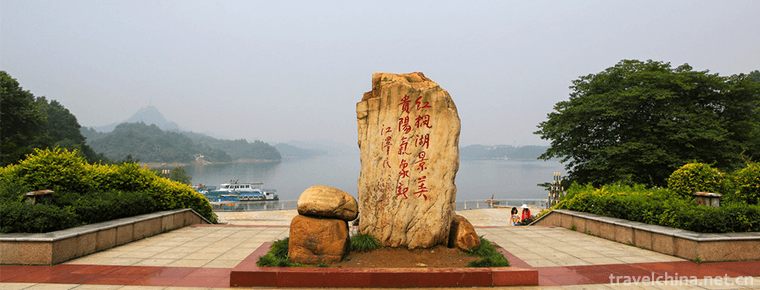
-
Weihai Liugong Island Scenic Area
WeihLiugong Island is located in Weihai Bay, the easternmost part of Shandong Peninsula. It has rich and unique cultural landscape, including the Warring States site dating back thousands of years.
Views: 100 Time 2018-12-08 -
Eight Zhai ditch
Bazhaigou, located in Dongli Village, Guitai Town, the hinterland of 100,000 mountains, more than 50 kilometers northwest of Qinbei District, Qinzhou, Guangxi Zhuang Autonomous Region.
Views: 99 Time 2018-12-24 -
Xisha Wetland of Pearl Lake
Located in Luhua Town, west of Chongming Island, Shanghai Mingzhu Lake is the largest natural inland lake on the island. It is also the main area of western water recreation .
Views: 156 Time 2019-02-07 -
Tsing Tan Temple
Qingdan Temple is located 3.5 kilometers west of Fucheng, Zaozhuang City, in the narrow valley of Chu and Han Mountains. It was built in the Tang Dynasty..
Views: 191 Time 2019-02-07 -
Tianjin Polar Ocean World
Tianjin Polar Ocean World is a theme park invested by Dalian Haichang Group in Tianjin. Tianjin Polar Ocean World is a large-scale open tourism project with the theme of Ocean Park.
Views: 218 Time 2019-02-21 -
Making Skills of Filament Mosaic
Silk mosaic is one of the traditional handicraft techniques in China. Gold, silver and copper are drawn into silk, and various decorations such as jewelry and utensils are made by various techniques..
Views: 138 Time 2019-05-04 -
Castawin Dance
Castawin Dance, a traditional dance in Heishui County, Sichuan Province, is one of the national intangible cultural heritage..
Views: 191 Time 2019-05-08 -
Mongolian Wedding
Mongolian young men and women marry on auspicious days, and men give gifts to women's homes. The gifts include cash, clothes, cloth, jewelry, rice and so on. There are cabinets, bedding, clothes, jewe.
Views: 142 Time 2019-06-03 -
Quyang stone carving
Quyang stone carving is an important part of folk art in Quyang County, Hebei Province. Since the Western Han Dynasty, Quyang stone workers have used marble to carve steles and other objects. Quyang s.
Views: 262 Time 2019-06-11 -
Yi Medicine Water Plaster Therapy of Yi Medicine
Yi medicine is the summary and wisdom crystallization of the Yi people's long-term struggle against disease, and it is an important part of the great treasure house of Chinese medicine. There are thou.
Views: 203 Time 2019-07-12 -
Huangjing Nature Reserve
This entry is lack of overview map, supplement the relevant content to make the entry more complete, but also quickly upgrade, come on!.
Views: 306 Time 2020-10-16 -
Yele Nature Reserve
Yele Nature Reserve is located in Yele Township, north of Mianning County, Sichuan Province, bordering on the south of Shimian County, Ya'an City. It is a provincial nature reserve. It is 70 kilometers away from Mianning County..
Views: 234 Time 2020-10-16
